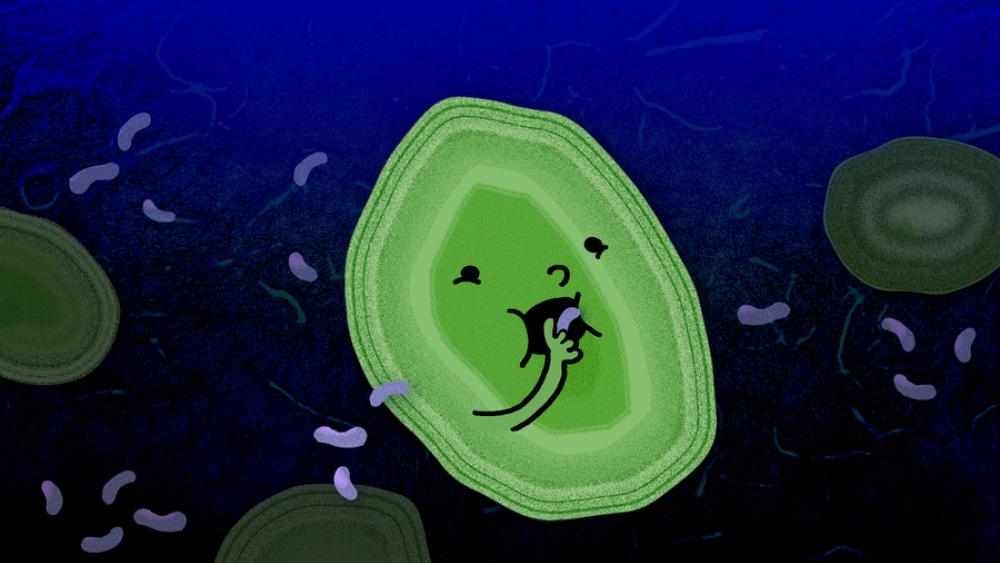
Long thought to rely solely on photosynthesis, the microbe Prochlorococcus may get as much as one-third of its carbon through a second strategy: consuming the dissolved remains of other dead microbes. | Picture: Jose-Luis Olivares, MIT
One of the smallest and mightiest organisms on the planet is a plant-like bacterium known to marine biologists as Prochlorococcus. The green-tinted microbe measures less than a micron across, and its populations suffuse through the upper layers of the ocean, where a single teaspoon of seawater can hold millions of the tiny organisms.
Prochlorococcus grows through photosynthesis, using sunlight to convert the atmosphere’s carbon dioxide into organic carbon molecules. The microbe is responsible for 5 percent of the world’s photosynthesizing activity, and scientists have assumed that photosynthesis is the microbe’s go-to strategy for acquiring the carbon it needs to grow.
Organisms that use a mix of strategies to provide carbon are known as mixotrophs. Most marine plankton are mixotrophs. And while Prochlorococcus is known to occasionally dabble in mixotrophy, scientists have assumed the microbe primarily lives a phototrophic lifestyle.
The new MIT study shows that in fact, Prochlorococcus may be more of a mixotroph than it lets on. The microbe may get as much as one-third of its carbon through a second strategy: consuming the dissolved remains of other dead microbes.
The new estimate may have implications for climate models, as the microbe is a significant force in capturing and “fixing” carbon in the Earth’s atmosphere and ocean.






